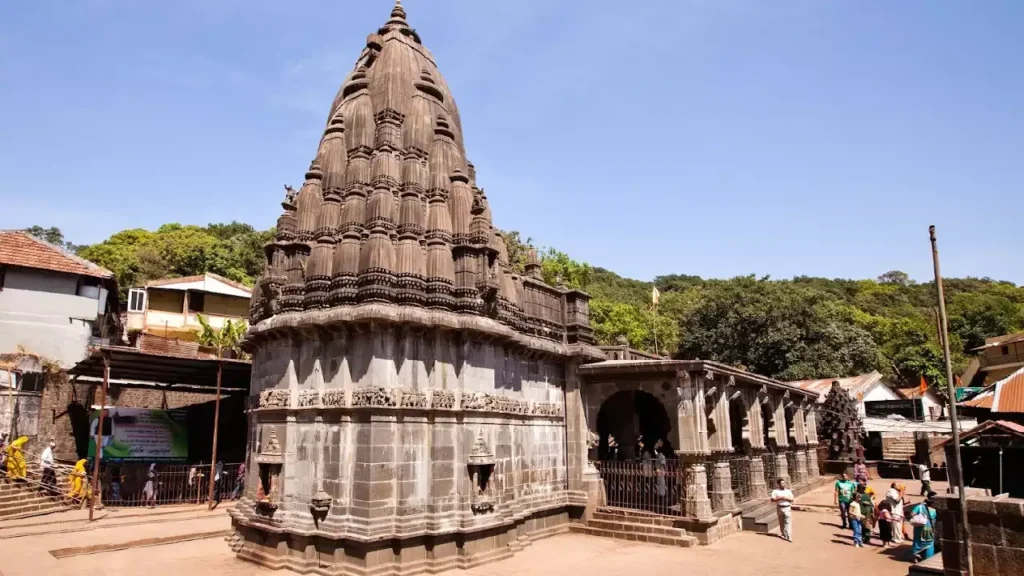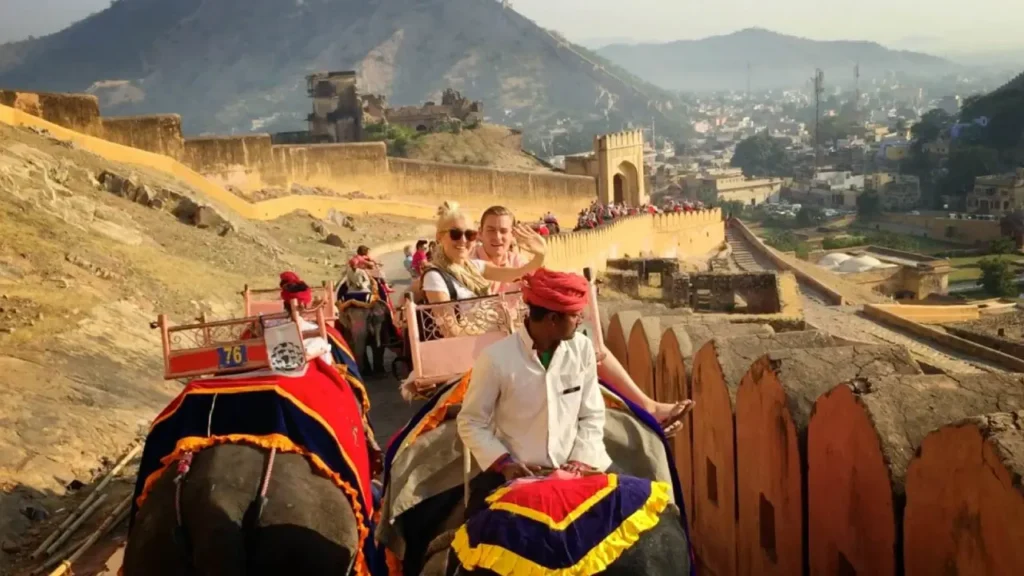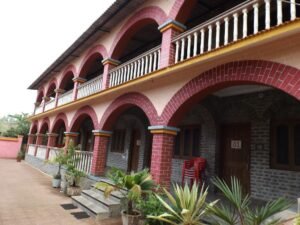India is a country of contrasts – majestic forts and futuristic cities, bustling bazaars and tranquil backwaters, centuries-old traditions and cutting-edge technologies. For foreign travelers, India can sometimes feel overwhelming at first. However, certain cities strike the perfect balance between comfort, safety, accessibility, and authentic cultural experiences, making them especially popular with international visitors.
These foreigner-friendly cities not only offer rich history, vibrant street life, and natural beauty but also cater to the practical needs of global travelers – well-connected airports, good infrastructure, English-speaking locals, foreign exchange facilities, diverse cuisines, and accommodation options that suit all budgets.
Here, as an experienced travel blogger, I’ve curated a detailed list of the top 12 foreigner-friendly cities in India, with explanations, travel guides, and factual data to help international travelers plan their journeys smoothly.
Table of Contents
1. Delhi – The Gateway to India
Delhi, the capital city, is often the first stop for international travelers. While chaotic, it is also incredibly resourceful for foreigners.
- Why It’s Foreigner-Friendly:
- Indira Gandhi International Airport is one of the busiest in Asia with excellent global connectivity.
- Metro network makes navigation easier.
- English widely spoken in hotels, restaurants, and markets.
- Highlights: Red Fort, Humayun’s Tomb, India Gate, Chandni Chowk food tours, and modern shopping hubs in Connaught Place.
- Travel Guide:
- Average hotel cost: Budget hotels start from ₹1,500/night, while premium stays go up to ₹10,000+.
- Best time to visit: October to March.
2. Mumbai – The City of Dreams
Mumbai, India’s financial capital, offers foreigners a mix of colonial heritage and modern lifestyle.
- Why It’s Foreigner-Friendly:
- Cosmopolitan atmosphere with strong expat communities.
- Availability of international cuisines and nightlife.
- Strong English-speaking population.
- Highlights: Gateway of India, Marine Drive, Elephanta Caves, Bollywood tours, and Colaba Causeway shopping.
- Travel Guide:
- Average hotel cost: ₹2,500–₹12,000/night.
- Best time to visit: November to February.
- Safety tip: Avoid traveling during peak monsoon (June–August).
3. Jaipur – The Pink City
Jaipur, part of the Golden Triangle (Delhi-Agra-Jaipur), is highly foreigner-friendly due to its heritage tourism infrastructure.
- Why It’s Foreigner-Friendly:
- Well-organized heritage hotels and guided tours.
- UNESCO World Heritage Sites.
- Easy day trips to nearby forts and palaces.
- Highlights: Amber Fort, City Palace, Hawa Mahal, local handicrafts markets.
- Travel Guide:
- Average hotel cost: Heritage stays start from ₹3,000/night.
- Best time to visit: October to March.
- Local experience: Try Rajasthani thali and shop for block-printed fabrics.
4. Agra – The City of the Taj
Agra is globally famous thanks to the Taj Mahal, one of the New Seven Wonders of the World.
- Why It’s Foreigner-Friendly:
- International-standard hospitality services.
- Part of the Golden Triangle route with easy transport.
- Multiple ticketing counters and guides for foreigners.
- Highlights: Taj Mahal, Agra Fort, Mehtab Bagh (for sunset views), and Fatehpur Sikri nearby.
- Travel Guide:
- Average hotel cost: ₹2,000–₹8,000/night.
- Entry fee for Taj Mahal: Foreign tourists ₹1,300.
- Best time to visit: October to March.
5. Rishikesh – The Yoga Capital of the World
Rishikesh has become a global hotspot for spirituality and adventure tourism.
- Why It’s Foreigner-Friendly:
- Known worldwide for yoga and meditation retreats.
- Vegetarian-friendly city (officially meat and alcohol-free).
- English-speaking ashrams and instructors.
- Highlights: Ganga Aarti at Triveni Ghat, river rafting, yoga teacher training courses, Beatles Ashram.
- Travel Guide:
- Average ashram stay: ₹800–₹2,500/night (including meals).
- Best time to visit: September to April.
- Note: Summers (May–June) can be hot; monsoon may disrupt rafting.
6. Varanasi – The Spiritual Hub
One of the oldest living cities in the world, Varanasi fascinates foreign travelers with its cultural and spiritual depth.

- Why It’s Foreigner-Friendly:
- Popular with cultural and spiritual seekers.
- Multiple guesthouses catering to foreigners near the ghats.
- Widely guided Ganga tours in English.
- Highlights: Evening Ganga Aarti at Dashashwamedh Ghat, Sarnath Buddhist site, boat rides on the Ganges.
- Travel Guide:
- Average hotel cost: ₹1,200–₹5,000/night.
- Best time to visit: October to March.
- Safety tip: Be cautious with street food and crowded ghats.
7. Goa – The International Beach Capital of India
Goa, once a Portuguese colony, is famous worldwide for its beaches, nightlife, and laid-back vibe.
- Why It’s Foreigner-Friendly:
- Major international tourist hub.
- Wide range of accommodations, from hostels to luxury resorts.
- English-speaking locals, vibrant nightlife, and fusion cuisine.
- Highlights: Baga Beach, Anjuna Flea Market, Old Goa churches, spice plantations.
- Travel Guide:
- Average stay: Budget hostels ₹700/night; beach resorts ₹5,000–₹15,000.
- Best time to visit: November to February.
- Fact: Goa receives over 8 lakh foreign tourists annually.
8. Kochi (Cochin) – Gateway to Kerala
Kochi is Kerala’s cultural and commercial hub, often the first stop for foreigners exploring “God’s Own Country.”
- Why It’s Foreigner-Friendly:
- Cochin International Airport connects to Europe and the Middle East.
- Popular with backpackers and cultural travelers.
- Strong hospitality infrastructure.
- Highlights: Chinese fishing nets, Fort Kochi, Mattancherry Palace, Kathakali performances.
- Travel Guide:
- Average stay: ₹2,000–₹7,000/night.
- Best time: September to March.
- Travel tip: Combine Kochi with Kerala backwater cruises from Alleppey.
9. Mysuru (Mysore) – The City of Palaces
Mysuru is known for its regal heritage and yoga culture, attracting many international visitors.
- Why It’s Foreigner-Friendly:
- World-renowned Ashtanga yoga schools.
- Rich heritage sites with English-speaking guides.
- Calm and safe atmosphere.
- Highlights: Mysore Palace, Chamundi Hills, yoga centers, and silk markets.
- Travel Guide:
- Average hotel cost: ₹1,500–₹6,000/night.
- Best time: October to February.
- Special experience: Visit during Dasara festival for royal processions.
10. Puducherry (Pondicherry) – The French Connection
Puducherry offers a slice of France in India, making it very appealing for foreign travelers.
- Why It’s Foreigner-Friendly:
- French Quarter with colonial architecture.
- Popular with European travelers due to cultural connection.
- Auroville community attracts spiritual and wellness seekers.
- Highlights: Promenade Beach, Sri Aurobindo Ashram, Auroville, French cafés.
- Travel Guide:
- Average stay: ₹1,200–₹5,000/night.
- Best time: October to March.
- Food tip: Try French-Indian fusion cuisine at quaint cafés.
11. Bengaluru – India’s Silicon Valley
Bengaluru is not just India’s IT capital but also a favorite city for expats and international travelers.
- Why It’s Foreigner-Friendly:
- Huge expat community due to IT hubs.
- English widely spoken in workplaces, restaurants, and hotels.
- Well-developed airport and nightlife.
- Highlights: Cubbon Park, Lalbagh Botanical Garden, craft breweries, Nandi Hills.
- Travel Guide:
- Average hotel cost: ₹2,500–₹10,000/night.
- Best time: October to February.
- Travel tip: Great weekend getaway base for Coorg, Mysore, and Hampi.
12. Udaipur – The City of Lakes
Udaipur is a favorite among international travelers looking for royal charm with modern comfort.
- Why It’s Foreigner-Friendly:
- Famous for luxury heritage stays.
- Scenic lakes and palaces offer unique cultural immersion.
- Safe and welcoming environment for solo and group travelers.
- Highlights: Lake Pichola boat rides, City Palace, Jag Mandir, Sajjangarh Fort.
- Travel Guide:
- Average stay: ₹3,000–₹12,000/night.
- Best time: October to March.
- Unique experience: Stay in a lake-facing haveli for authentic charm.
Tips for Foreign Travelers Visiting Indian Cities
- Visa & Entry: Apply for India’s e-Visa, which is available for nationals of 170+ countries.
- Currency: Indian Rupee (INR). Foreign exchange available at airports, hotels, and ATMs.
- Language: Hindi and English are widely spoken, with regional languages in specific states.
- Transport: Use Ola/Uber apps in metro cities; prepaid taxis in airports; rail and domestic flights for intercity travel.
- Safety: India is generally safe, but avoid isolated areas at night and keep an eye on personal belongings.

Conclusion
India offers an extraordinary blend of culture, heritage, spirituality, and modernity. For foreign travelers, the experience can be smooth and enriching when visiting cities that are welcoming, easy to navigate, and rich in attractions.
From the cosmopolitan vibes of Mumbai and Bengaluru to the spiritual aura of Varanasi and Rishikesh, and from the royal charm of Jaipur and Udaipur to the coastal beauty of Goa and Kochi, India’s foreigner-friendly cities provide a safe and memorable entry into the country’s soul.
Each of these 12 cities not only makes international tourists feel at home but also opens doors to India’s rich cultural diversity and hospitality. Whether you are here for yoga, adventure, heritage, or cuisine, these destinations promise an unforgettable journey that blends comfort with discovery.




